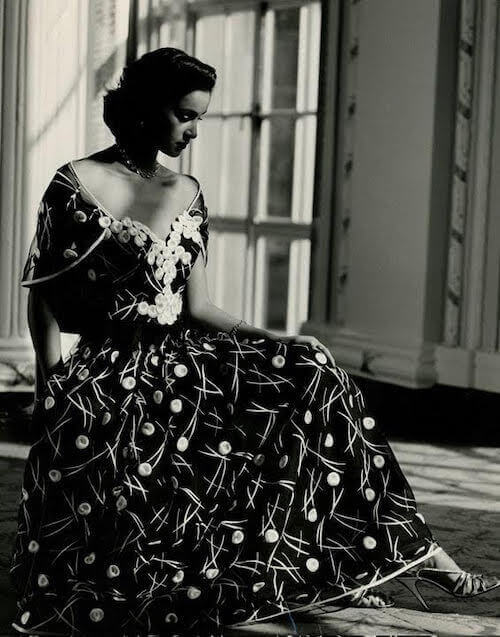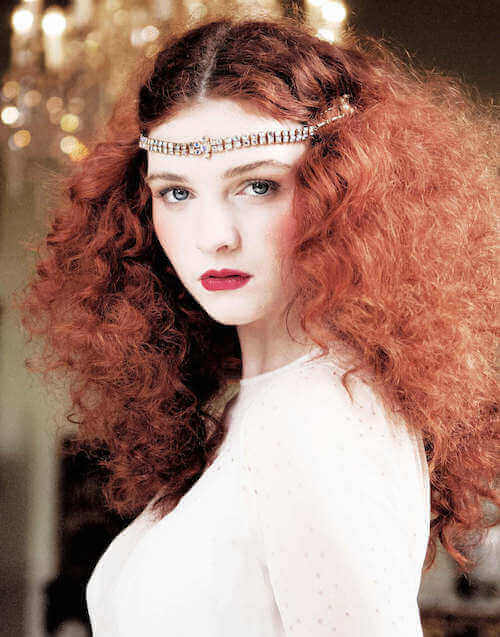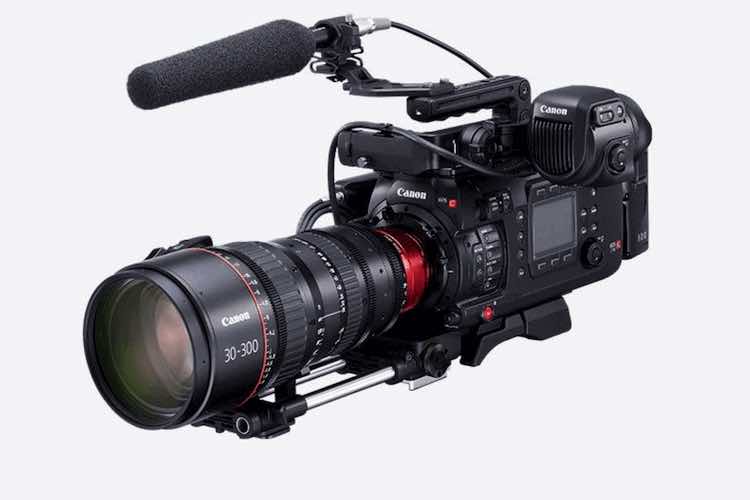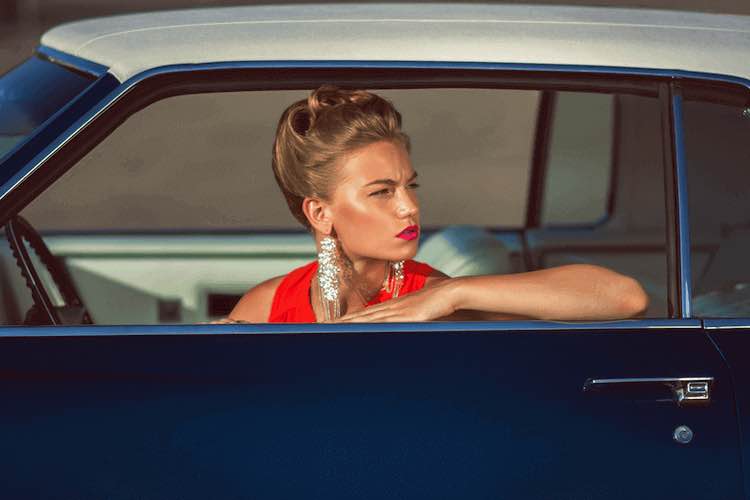This week, we were honored to interview Bruce Smith, an inspiring and talented fashion photographer based in Paris, Bordeaux, Monaco and London. Bruce has been shooting fashion for 40 years. He shoots high fashion for some of the top designers and manufacturers of couture and bridal wear, including Margaret Lee, Lyn Ashworth and Eleni Costi.
Bruce’s classic fashion images inspired a long list of lingerie, hosiery and swim wear commissions from brands including, Charnos, Lapel, Silhouette, Miss Kini and Panache plus many other manufacturers of fashion and fashion magazines.
Bruce is also teaching fashion and nude photography master classes all around the world and writing books on how to shoot digital fashion photography.
So, for the tips from pro photographers, read on! And if you haven’t seen our article - Expert Tips for Nude Photography, check it out!
How did you start your career?
I was always Inspired by the iconic images of great photographers from the decades past, such as Cecil Beaton, Norman Parkinson, David Bailey, Barry Lategan, Horst P Horst, Irving Penn and Richard Avedon.
Like many successful photographers, I achieved my first big break as a fashion photographer by setting up a test shoot with a model.

I borrowed some ‘fifties’ style couture gowns from a top fashion designer who sold her clothes through exclusive London stores. Such was the impact of these images on the designer, she commissioned me for her next fashion collection. So what started as a test, became a commissioned shoot the images from which became Bruce’s first published fashion editorial spread in one of the UKs leading fashion magazines, at the time ‘Avante Guard’.
The next big break followed soon after with a commission from Catherine Raynor, a leading UK bridal wear couture designer, who had previously worked with such iconic photographers as Norman Parkinson, Terrance Donavan and John Swanell. Her status within the bridal wear industry, and the success of the images that I produced for her, created a chain reaction, which brought a queue of top bridal wear and couture designers to my studio door to shoot their fashion collections.
Now my commercial work is all fashion, for my creative expression and relaxation my personal favorite work is fine art nudes. I also love teaching fashion, portraiture and fine art nude photography.
How would you describe your photography style?
I would describe my style as recreating and recording elegance and romance in my images, expressing my feelings and ideas of how I would like to see the world’s beauty. I love beautiful lines and use them to create graphical geometric shapes, often using off square dynamics to create the leading lines and for good composition. It’s often criticized and admired at the same time for breaking the rules, but doing it well.

I believe that I use a great deal of what I have learned during my Graphic design training which definitely appears in my work today.
Understanding geometry, object, and negative space, being able to balance them in the image without thinking about it, it’s like driving a car.
Have you ever thought of giving up?
Yes, I have thought about giving it up, but I always decide that I can’t give up something that means so much to me. Through my work, I gain respect and value for myself as well as respect from others. I love it too much to give it up. I also gain a great deal from teaching fashion photography and believe that every gift we possess or talent that we are given does not belong to us, and by sharing these talents and gifts, we gain the right to keep them.
How do you prepare for the shooting?
When I first receive an inquiry from a new client, I ask them which of my images have influenced them to contact with me. With this knowledge, I can rely on my experience to put together my ideas for the client. I also listen carefully to their objectives for the proposed images. Images are used for 3 main objectives:
- for editorial to reflect fashion trends
- for advertising to create brand awareness
- and for commercial fashion or for catalogue fashion to sell fashion off the page
Each needs a different approach to how you produce the images.
What camera and equipment do you use?
I shoot with Nikon D series cameras, my favorite lens is a 17 to 55mm or 24 to 70mm f2.8 depending on whether I’m shooting with full-frame sensors or not. They also allow me to be close to my subject for better exchange of good communication, energy, and feelings than when you are shooting from far away with long lenses, but I still sometimes use a 70 to 200mm f2.8. Recently I began shooting with Olympus OM camera but still testing it out, and I am very happy with the results.
What is your overall philosophy about lighting?
I love to shoot with available light using reflectors and diffusers to alter the light. It’s much more beautiful if you know how to use it than a flash. I often shoot with HMI or Arri continuous lighting. I shoot quickly, and shooting with available light means you won’t miss a shot waiting for flash to recycle.

Shooting with available light and finding the best light is a big part of what I believe photography is about. PHOTO GRAPHY, LIGHT GRAPHIC or drawing with light… If I’m using a flash or continuous light, I light as close as I can to natural light. This means I light my set or location and put my model in the best light even if I am shooting with flash I try to keep to this formula.
What kind of post-production do you have?
I use Bridge to edit my images choice and Photoshop to retouch them, but I keep my retouching to a minimum.
Are the images in your new books, “Black & White Plus A Little Bit of Color” and “130k Words In Pictures”, your commercial or personal view?

There is a mixture of both. When I shoot my personal work, I try to put and to see more of what I feel in the images, for my clients I portray their needs and objectives into their images, but adding my creative touch, usually giving them more than they need. I always put my heart and soul into my work whether for commissioned assignments for clients or for my personal work.
Why did you choose a color tint finish approach rather than plain B&W? Is there any special meaning to you?

An image that is B&W can be quite uninteresting to the eye, colors create emotions, a feeling of warmth or cold, etc. I always add a little color to my monotone images to achieve this.
Lately I’ve been adding solid color layers over the image, which I think gives a much more ethereal look to my work. No special reasons, completely subjective.
Is it more appropriate and popular to shoot in B&W than in full colors, since most fine artworks are B&W?
I always shoot in color and choose desaturation if the images suit it. Not every image is suitable for losing color. Again, a completely subjective choice. The B&W image gets across the feelings tone and texture of an image rather than having an additional color element to distract from the message. I don’t consider it’s more creative, pure physics.
As competition among photographers grows these days, how can you stay on top or make a breakthrough into the industry if you are new to photography?
I’m relying more and more on every aspect of social media and keeping on top of SEO coding, Meta tags, title tags, etc. I keep my website high on Google search to generate more connections to find new clients and to make them more likely to find me. I also always show my most recent images, targeting the types of clients I think my work suits too.

There is no replacement for experience, in the early days of my career this was essential but not anymore, with the advent of the digital age, and the vast number of photographers chasing clients showing some amazing images but very often images that have a great deal of post-production to make them look good.
I have survived 4 recessions, sometimes, I wonder how but my dedication and drive keep me going. As long as you are active in spreading the word about your work getting it seen, there will be clients wanting to shoot with you. Especially the more you specialize in a genre of fashion like I do your reputation should stay strong.
What advices could you give to the young fashion or fine art photographers?
To gain an advantage, learn the skills and the business of fashion photography by reading about the top photographers, look very carefully at their work. Shoot test, after test, after a test for a least a couple of years keeping your eye on the current fashion photography trends also by reading every fashion magazine, looking at every kind of fashion image to see what style of fashion excites you the most then add all of your own ideas to your work.

Take courses, read books, watch YouTube videos and then come to me for professional mentoring and master classes. I can teach you to become a great photographer in 5 days if you have passion and a good eye. I am always ready to help new photographers to improve.
The work of Bruce you can follow on his website, Twitter, Facebook, Instagram. Also, check out YouTube videos:

 Canon Video Camera: All Line-up by Price Range
Canon Video Camera: All Line-up by Price Range